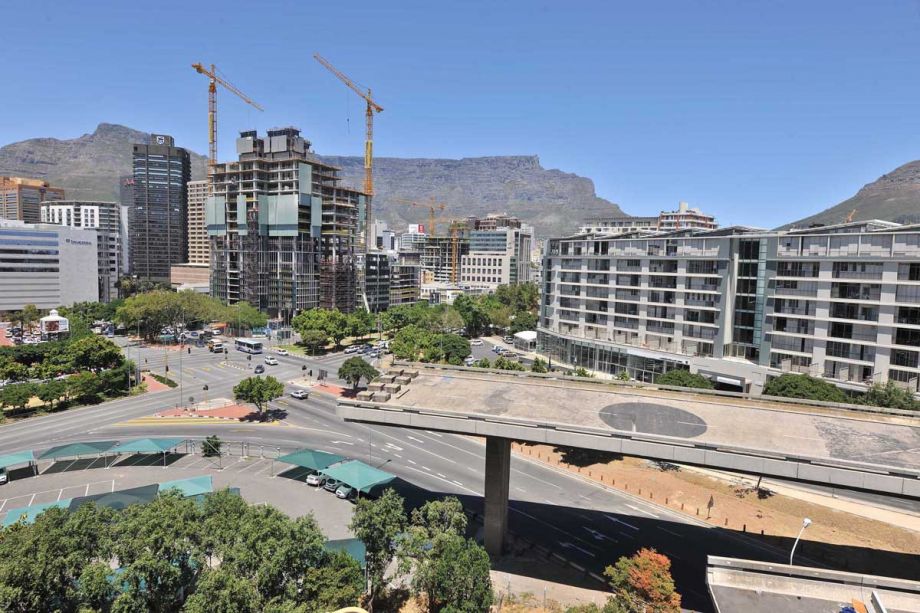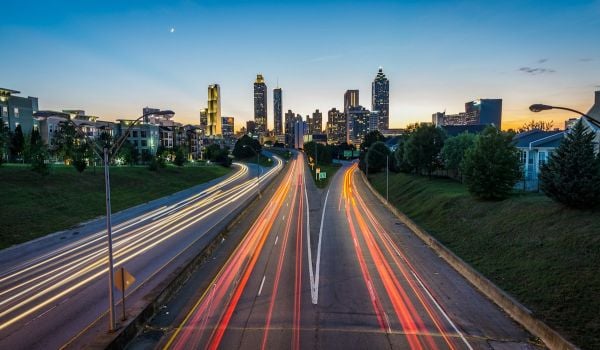In the 1970s, a set of elevated highways began rising up near the shore of Cape Town, South Africa. Known locally as the “Foreshore freeways” after the industrial area through which they run, these roads separate Cape Town’s city center from its port much as other urban highways do on waterfronts the world over.
What distinguishes the Foreshore freeways, however, is that they were never completed.
Today in Cape Town you can see where two different arms of a two-lane highway reach off the ground and then abruptly stop mid-air. Other, functional portions of the road continue on, but snug between them sit lonely middle sections of the part that never got fully stitched together.
For as long as this section of the Foreshore has remained standing unused, its various unconnected parts have become acknowledged monuments to outdated planning practices and bungled city projects.
Yet despite the atavistic role they play in the local imagination, it appears that most Capetonians would rather see them disappear.
The non-profit think tank Future Cape Town today released the results of an informal poll finding that nearly half of respondents voted to demolish the Foreshore freeways. The poll — which, it must be said, only had a couple hundred participants — involved passersby submitting two-question ballots into a box in Church Square, a central public space.
Respondents had five options for the question of improving the Foreshore freeways. Coming out on top, with 48 percent of the vote, was the option of tearing down the roads to reconnect Cape Town’s central business district with the waterfront. Another 29 percent said the unfinished structures should become museums, while 19 percent voted convert them into elevated green spaces à la the High Line. Only 8 percent said that the city should work to activate the space below the freeways.
The results mirror another poll Future Cape Town held three months ago, when it placed the ballot box in a bus station. Then, 35 percent went for the demolish-and-reconnect option, though it still proved the most popular answer.
(The poll’s other question asked respondents about their preferred mode of future development projects. Interestingly, most — about half — opted for a suburbs-meets-city option, with mixed-use and densification. Classic suburbs were the next most popular option, followed by a compact city. Informal development came up last, alas.)
“When Capetonians talk about the freeway along the Foreshore, there’s a good chance it involves a joke about the mysterious unfinished sections,” goes one op-ed from Future Cape Town on the Sustainable City Collective’s blog. “It’s not the unfinished sections that I care about, it’s the entire thing.”
The writer goes on to say that the South African city could take cues from San Francisco, which tore down the elevated Embarcadero Freeway in the 1990s after it incurred damage from an earthquake. Today the Embarcadero is a six-lane boulevard with ample room for pedestrians, cyclists, dining and retail.
But other Cape Town residents have said removing the unfinished arms of the freeways, which for better or worse have become a defining part of the city skyline, would represent a blow to their built heritage. As Future Cape Town found in its poll, some respondents argued that, “demolishing the freeway would be like getting rid of an icon that has been associated for so long with the landscape of the city.”
What histories do failed infrastructure projects like the Foreshore freeways really represent, though? Lisa Kane, a sustainable transportation consultant and researcher at the University of Cape Town, gives a rundown and analysis of the multi-decade planning process that led to the Foreshore freeways in a 2011 report.
“The seemingly neutral urban road infrastructure we now live with have embedded in them their social and political histories,” Kane wrote (emphasis in original). She added that the politics of the Foreshore freeways “privilege some actors and interest groups over others as they continue to describe the transport infrastructure, and city, which was seen as ‘best’ by the engineering and planning of the 1940s to 1950s.”
“When considering what to the with these political artefacts [sic] from the past we would do well to reflect on their histories,” Kane concluded, “and on what politics are embedded in them.”
















